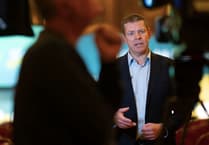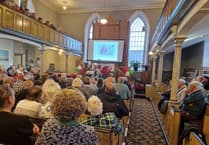RENEWABLE energy developers across Wales have stepped in to provide Natural Resources Wales (NRW) with an unprecedented dataset, covering more than 700 km² of land, to help conservation efforts for Wales’ most threatened bird species.
The data, gathered through surveys at 53 proposed wind and solar projects, will now inform NRW’s nationwide wader survey scheduled for 2026 — with a particular focus on the curlew. Curlew numbers are falling by around six per cent each year, leaving as few as 400 breeding pairs. Without urgent action, they could disappear from Wales by 2033.
By pooling and sharing their resources, developers have given NRW access to broad survey coverage and high-quality data that would have been impossible for them to replicate within existing budgets or fieldworker capacity. The dataset provides vital insight into where breeding populations of waders — including 76 curlew territories, as well as lapwing, snipe, golden plover, and redshank — remain, and where they may have disappeared. This clearer picture will enable NRW to target its survey work far more effectively and prioritise conservation efforts.
Jessica Hooper, Director of RenewableUK Cymru, said:
“This kind of collaboration is hugely important given the short time we have left to act.
“By sharing rigorous ecological data already collected for project planning, developers have enabled NRW to cover more ground, more quickly, and at no extra cost to the taxpayer. It shows how the private and public sectors can work together to help conserve species at risk.”
Bethan Beech, Specialist Advisor for Terrestrial Species Recovery at Natural Resources Wales (NRW), said:
“This collaborative approach supports our commitment to nature recovery and evidence-based decision-making, as outlined in NRW’s corporate plan. The data provided by RenewableUK Cymru is being used by NRW during the planning phase of the 2026 Wales Wader Survey.
“Having access to this information enables NRW and its partners to concentrate survey efforts in areas that have not been monitored for curlew or other wader species in recent years.”
The dataset was collated and standardised by BSG Ecology and has now been passed to NRW’s Land and Nature Group. It will form a critical part of the evidence base underpinning the Curlew Recovery Plan for Wales, first published in 2021.
Participating developers included RWE Renewables, Galileo Empower UK Ltd, Vattenfall Ltd, Trydan Gwyrdd Cymru, Wind 2, Coriolis Energy Ltd, Bute Energy and EDF Energy, with support from Dulas Ltd, SLR, Atmos Consulting and BSG Ecology.
.jpeg?trim=80,0,80,0&width=752&height=501&crop=752:501)




Comments
This article has no comments yet. Be the first to leave a comment.